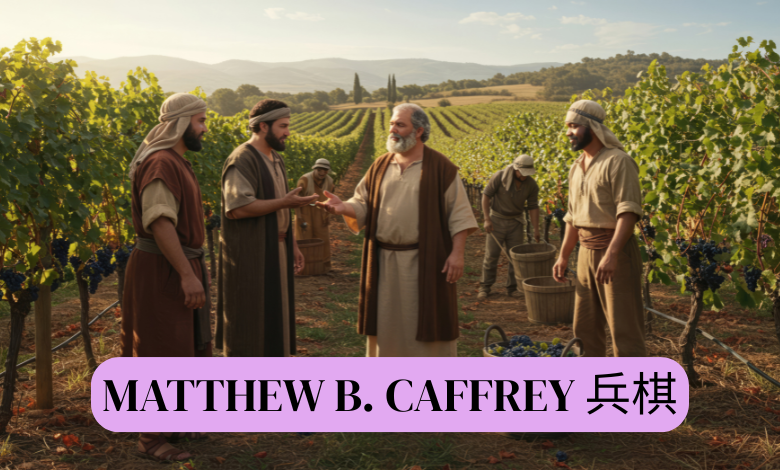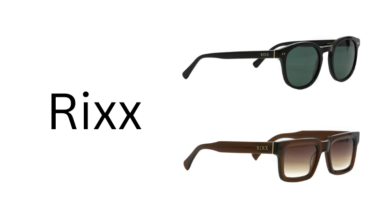How Matthew B. Caffrey Shapes Modern Wargaming: Concepts, History & Applications

If you have ever wondered how armies test strategies without risking real lives, or how military leaders prepare for uncertain futures, the answer often lies in something called wargaming (in Chinese, 兵棋推演). Wargaming is not just about playing with toy soldiers or pushing counters across a board. It is a structured way to explore possible futures, test ideas, and improve decision-making.
One of the leading figures in this field is Matthew B. Caffrey Jr. He is not a household name like generals or politicians, but within the wargaming world he is widely respected. His ideas and frameworks, such as the “third-generation wargame,” the “Caffrey Triangle,” and the “Strategy Cycle,” have shaped how militaries, governments, and even civilian organizations think about using wargames to solve problems.
When I first came across his book On Wargaming: How Wargames Have Shaped History and How They May Shape the Future, I was struck by how accessible it was. Instead of drowning the reader in jargon, Caffrey walks through history, theory, and practice in a way that feels both practical and inspiring. In this article, I will walk you through who Matthew B. Caffrey is, what he contributed to the field of 兵棋, why his concepts matter, and how wargaming is used today. I will also share some of my own reflections as someone fascinated by both strategy games and history.
Who is Matthew B. Caffrey?
Matthew B. Caffrey Jr. served for decades as a U.S. Air Force officer and later as a civilian faculty member at the Air Force Institute of Technology. He is known for founding and leading the Connections Wargaming Conference, which has become the main international forum for professional wargamers to share ideas and improve methods.
Beyond conferences, his biggest impact comes from his writing. His 2019 book On Wargaming was published by the U.S. Naval War College and is available free online. It is both a history of wargaming and a guide to how it can be applied in the present. In his career, he has designed and facilitated wargames for education, training, and policy development.
Caffrey’s mission has always been clear: to bridge the gap between history, theory, and practice. He is not just interested in how wargames look on paper, but in how they actually influence decisions and improve outcomes.
Read Also: Born Again Remodel Repair LLC: Trusted Remodeling and Repair Services for Your Home
Key Concepts Introduced by Caffrey
Caffrey is best known for several frameworks that help explain and guide wargaming. Let’s break them down in simple language.
1. Third-Generation Wargame
Earlier wargames were mostly rigid. The first generation (like Kriegsspiel in 19th-century Prussia) had strict rules and dice rolls. The second generation relaxed some rules, allowing referees to make judgments. But the third generation, as defined by Caffrey, integrates wargames into real organizations. These are not just games for practice. They are embedded in the decision cycle of militaries and governments, used to test real strategies and policies.
This idea shifted wargaming from hobby or training exercise into a powerful tool of governance.
2. The Caffrey Triangle
The triangle is a way of showing how three elements interact: theory, history, and experience. If you only rely on theory, you risk being too abstract. If you only look at history, you may repeat old mistakes. If you only rely on personal experience, your view is too narrow. By balancing all three, wargamers and decision-makers can think more clearly about complex problems.
3. The Strategy Cycle (Caffrey Loop)
The strategy cycle describes how wargaming, experimentation, and analysis feed into each other. It’s not a one-time event. A wargame informs analysis, which shapes experiments, which then inform the next wargame. This cycle helps organizations keep improving their understanding of the world.
The Theory & History of Wargaming (兵棋推演)
Wargaming has ancient roots. In China, the game of Weiqi (Go) was often thought of as a metaphor for strategy. In India, Chaturanga eventually evolved into chess, another strategic game. But the more formal kind of wargaming, known as Kriegsspiel, began in Prussia in the early 1800s. Officers used detailed maps, pieces, and rules to simulate battles.
From there, wargaming spread around the world. The Japanese Navy famously used wargames before the attack on Pearl Harbor. The U.S. Navy also used wargames at the Naval War College to test carrier warfare before World War II. Many of the lessons learned in those games later played out in real battles.
Caffrey emphasizes that history shows the value of wargames. They can reveal weaknesses, test new ideas, and prepare leaders for surprises. But history also shows their limits. Wargames are not crystal balls. They cannot predict the future perfectly, but they can help leaders prepare for a range of possibilities.
Practical Applications & Case Studies
So how do militaries use wargames today?
In professional military education, students run through scenarios where they must make decisions with incomplete information. This forces them to think critically, weigh tradeoffs, and practice leadership.
In operational planning, wargames test battle plans. For example, before an exercise or campaign, officers might simulate the plan to see where it might break down. It is much better to discover flaws in a game than in combat.
In policy and strategy, wargames help leaders explore long-term challenges like cyber warfare or space operations. These are areas where history offers few precedents, so games allow policymakers to explore new ground.
One case Caffrey discusses is the use of Title 10 wargames by the U.S. services. These are large exercises mandated by law, designed to test service plans. They bring together hundreds of participants and can have real influence on budgets and programs.
Design & Methodology: How to Build a Wargame
Designing a wargame is both art and science. You need clear objectives: Are you teaching students? Testing a plan? Exploring a policy? Once the objective is set, you design the scenario. This might be a fictional conflict, a historical battle, or a future crisis.
Next comes rules and adjudication. Will outcomes be decided by dice, computers, or expert referees? Then there are participants: who plays which roles? A game with only officers will differ from one that includes civilian policymakers or technical experts.
Caffrey often stresses that a wargame is not the same as a simulation. A simulation tries to model reality in detail. A wargame is about decision-making. It is about how humans react under pressure, how they make choices, and what consequences those choices create.
The Wargaming Community & Conferences
One of Caffrey’s greatest contributions is not just his theories but his ability to bring people together. The Connections Wargaming Conference, which he founded in the 1990s, has grown into an international network. Each year, professionals from militaries, governments, universities, and even hobbyist communities meet to exchange lessons.
At Connections, you might see a general discussing operational games, a professor explaining game design for classrooms, and a hobbyist sharing insights from board wargames. This diversity is what makes the community so rich.
I once attended a smaller wargaming workshop inspired by Connections, and what struck me was the openness. People were not jealously guarding secrets. They were eager to share methods and improve the craft together. That spirit reflects Caffrey’s vision.
Critiques, Limitations & Future Trends
Of course, wargaming is not perfect. Critics argue that games can reinforce biases. If the people running a wargame already believe in a certain strategy, they may design the game to prove themselves right. Others point out that games can never capture the chaos and fog of real battle.
Caffrey himself acknowledges these limits. The point is not that wargames are flawless, but that they are useful tools when combined with other methods like simulations, analysis, and field exercises.
Looking ahead, the future of wargaming may involve more digital tools, artificial intelligence, and cross-domain simulations. Imagine a wargame that links cyber attacks, satellite operations, and ground combat into one integrated picture. Some of this is already happening.
Conclusion
Matthew B. Caffrey Jr. has done more than almost anyone to make wargaming a respected, professional discipline. His concepts like the third-generation wargame, the Caffrey Triangle, and the Strategy Cycle provide a framework for thinking about complex problems. His work reminds us that wargames are not just games. They are laboratories for strategy.
Whether you are a military professional, a student of history, or even just a curious gamer, there is something valuable in studying Caffrey’s ideas. At the end of the day, wargaming is about learning from the past, testing in the present, and preparing for the future.
FAQ
Q: What is a third-generation wargame?
A: It is a wargame integrated into real organizational decision-making, not just a training or educational tool.
Q: What does the Caffrey Triangle mean?
A: It is a framework balancing theory, history, and experience in wargaming and strategy.
Q: How is wargaming different from simulation?
A: A simulation tries to model reality. A wargame focuses on human decision-making and choices.
Q: Can civilians use wargaming methods?
A: Yes. Wargaming can be used in business, education, and even hobby gaming to explore strategy and improve decisions.
Q: Where can I read On Wargaming?
A: It is available for free through the U.S. Naval War College website.



